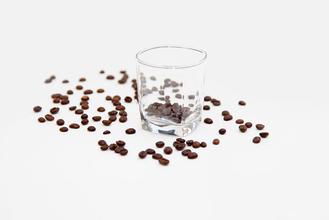Introduction of varieties produced by grinding scale method for flavor description of Brazilian coffee beans
Introduction of varieties produced by grinding scale method for flavor description of Brazilian coffee beans
There are many kinds of Brazilian coffee, it is difficult to say that it has any special flavor, no outstanding advantages, no obvious disadvantages, most of them are medium acid, taste lubrication, mainly mild and smooth, mellow and sweet, its softness makes it mixed with other coffee beans, the taste will not change much; and the oil is relatively rich. So Brazilian coffee beans are best mixed with other coffee beans to make espresso, which forms a golden foam on the surface of espresso and gives the coffee a slightly sour taste and a long finish. In fact, all the big coffee roasters have some coffee from Brazil in their blends.
The success of the reform has increased the confidence of coffee farm operators. Coffee farms in Brazil will choose solarization, half-sun, washing, half-washing or honey treatment, which is very popular in the boutique coffee industry in recent years, according to the dry and humid climate. To show the best regional flavor. For example, Serrado in the Midwest of Minas, where the humidity is ultra-low, is still mainly in the sun. The manor here believes that as long as the sun is strictly controlled, it can best highlight Serrado's unique nutty flavor and sweetness, while half-sun has become a supporting role in Serrado. The manor in South Minas is the most inclusive, using half-sun, sun and water, respectively. Brazil has such a variety of treatment options that it is rare in the world besides the coffee's hometown of Ethiopia.
The old bourbon coffee is grown on some estates in the Serrado district of MinasGreais in southeastern Brazil. These estates, such as Caping Blanco (CapinBranco) and Vista Allegre (VistaAllegre), grow old varieties of bourbon coffee on the market. Although they come from the same area, these coffees have their own characteristics. Capingblanco coffee is smoother than Vesta Allegre coffee, while Vesta Allegre coffee is strong and black, both of which have lower acidity. However, like all Brazilian coffee, they are most suitable for drinking when they are fresh and tender, because the older they are, the more acidic they are. These coffee growers have organized themselves into the Brazilian Special Coffee Association (theSpecialityCoffeeAssociationofBrazil).
In the first three or four years before the coffee tree began to bear fruit, the beans were small and curved, with excellent flavor, and became the "Bourbon Santos". After that, the beans became bigger, flat in shape, no longer bent, and became "flat bean Santos". The flavor was not as good as before. Brazilian coffee can be found everywhere in Taiwan, but most of them are flat bean Santos. In fact, there are still high-quality coffee beans in various parts of Brazil, which will be sold on the market under their own name and are no longer commonly known as "Brazilian coffee." Some farms still retain the old bourbon species, with small particles of raw beans, obvious bending, red silk on the central line and the nickname "red center". Bourbon beans taste full, strong aroma, like drinking old wine, it is well worth a try

Important Notice :
前街咖啡 FrontStreet Coffee has moved to new addredd:
FrontStreet Coffee Address: 315,Donghua East Road,GuangZhou
Tel:020 38364473
- Prev

The Story of Ethiopian Coffee introduction to the Variety treatment method in the producing area of the Manor
The Story of Coffee in Ethiopia Ethiopia is the earliest country in the world to grow coffee and maintain the oldest coffee culture. It can be said to be the origin of origins, the place of origin of coffee. According to statistics, the country produces about 396000 tons of coffee every year. It can be said that the coffee varieties in other coffee producing areas are all from Ethiopia.
- Next

The whole process of coffee from picking to finished product-Yunnan coffee bean picking season
The whole process of coffee from picking to finished product-the Arabian coffee tree is usually a larger shrub during the Yunnan coffee picking season, with green, oval leaves and oval fruit, and generally has two flat seeds. If only one bean seed germinates, it's called pea-shaped coffee beans. The word Roberts comes from the most widely grown variety of Canifra coffee. Robbins is
Related
- Detailed explanation of Jadeite planting Land in Panamanian Jadeite Manor introduction to the grading system of Jadeite competitive bidding, Red bid, Green bid and Rose Summer
- Story of Coffee planting in Brenka region of Costa Rica Stonehenge Manor anaerobic heavy honey treatment of flavor mouth
- What's on the barrel of Blue Mountain Coffee beans?
- Can American coffee also pull flowers? How to use hot American style to pull out a good-looking pattern?
- Can you make a cold extract with coffee beans? What is the right proportion for cold-extracted coffee formula?
- Indonesian PWN Gold Mandrine Coffee Origin Features Flavor How to Chong? Mandolin coffee is American.
- A brief introduction to the flavor characteristics of Brazilian yellow bourbon coffee beans
- What is the effect of different water quality on the flavor of cold-extracted coffee? What kind of water is best for brewing coffee?
- Why do you think of Rose Summer whenever you mention Panamanian coffee?
- Introduction to the characteristics of authentic blue mountain coffee bean producing areas? What is the CIB Coffee Authority in Jamaica?

